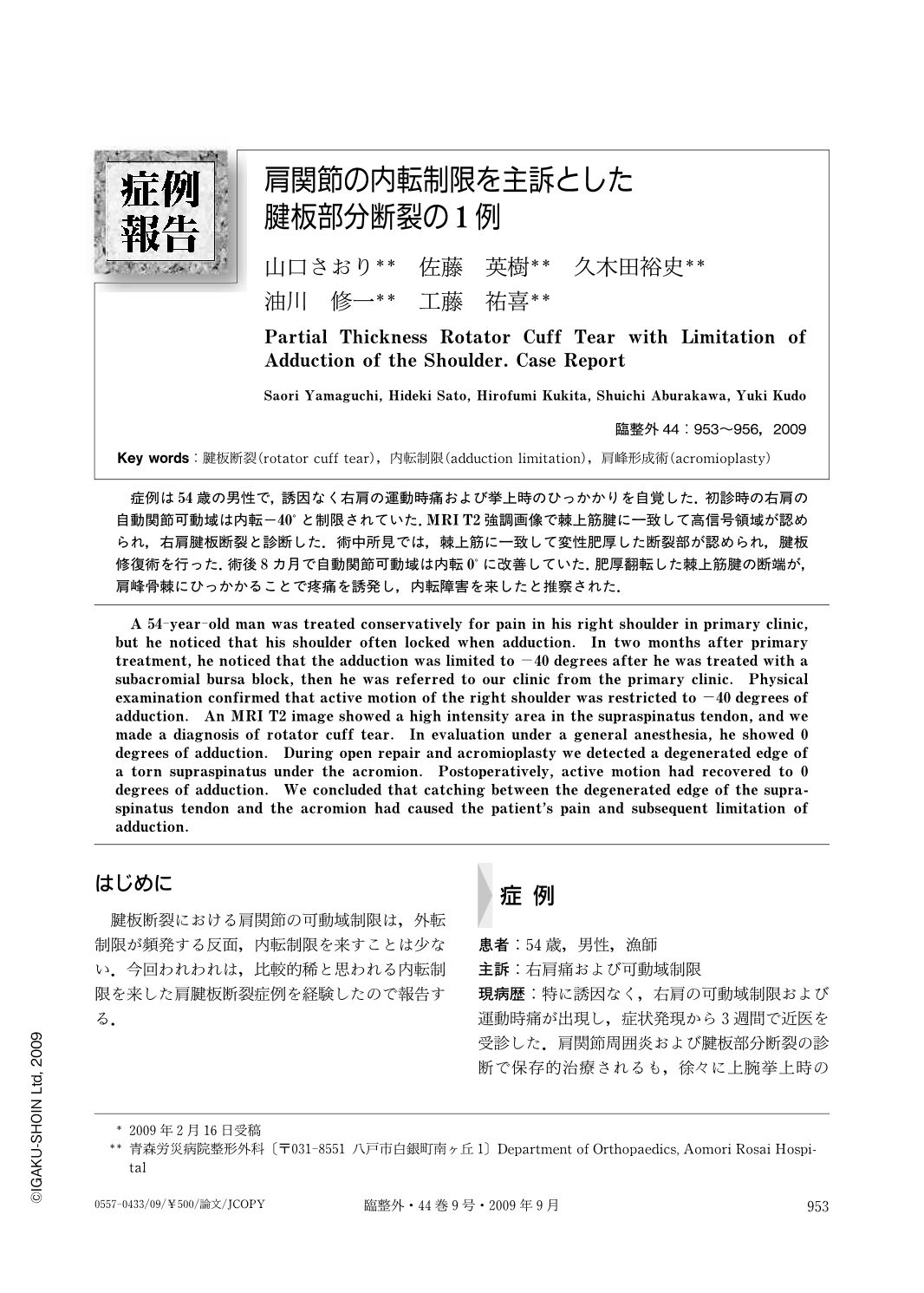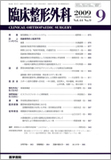Japanese
English
- 有料閲覧
- Abstract 文献概要
- 1ページ目 Look Inside
- 参考文献 Reference
症例は54歳の男性で,誘因なく右肩の運動時痛および挙上時のひっかかりを自覚した.初診時の右肩の自動関節可動域は内転-40°と制限されていた.MRI T2強調画像で棘上筋腱に一致して高信号領域が認められ,右肩腱板断裂と診断した.術中所見では,棘上筋に一致して変性肥厚した断裂部が認められ,腱板修復術を行った.術後8カ月で自動関節可動域は内転0°に改善していた.肥厚翻転した棘上筋腱の断端が,肩峰骨棘にひっかかることで疼痛を誘発し,内転障害を来したと推察された.
A 54-year-old man was treated conservatively for pain in his right shoulder in primary clinic, but he noticed that his shoulder often locked when adduction. In two months after primary treatment, he noticed that the adduction was limited to -40 degrees after he was treated with a subacromial bursa block, then he was referred to our clinic from the primary clinic. Physical examination confirmed that active motion of the right shoulder was restricted to -40 degrees of adduction. An MRI T2 image showed a high intensity area in the supraspinatus tendon, and we made a diagnosis of rotator cuff tear. In evaluation under a general anesthesia, he showed 0 degrees of adduction. During open repair and acromioplasty we detected a degenerated edge of a torn supraspinatus under the acromion. Postoperatively, active motion had recovered to 0 degrees of adduction. We concluded that catching between the degenerated edge of the supraspinatus tendon and the acromion had caused the patient's pain and subsequent limitation of adduction.

Copyright © 2009, Igaku-Shoin Ltd. All rights reserved.


